What’s the current outlook for sailing in the Canary Islands: what treasures are to be found and what perils to watch out for? How to plan for yachting trips while taking into account COVID-19 restrictions? Ladislav Kalina, who sailed here in February 2021 and even celebrated a personal milestone of 20,000 nautical miles sailed, tells all!
Photography by Jan Hesoun.
At the beginning of February we arrived in Tenerife to find a taxi from the charter waiting for us: we were soon on our way and quickly boarded at the port of Radazul.
This was the fourth time I’d chartered a boat from Alboran – the company is certainly my go-to in this neighbourhood. They have both older boats for competitive prices, and also newer models. Whether old or new, you’ll find the boats in good condition, and, while the handover can take a little while, it is a thorough and professional process.
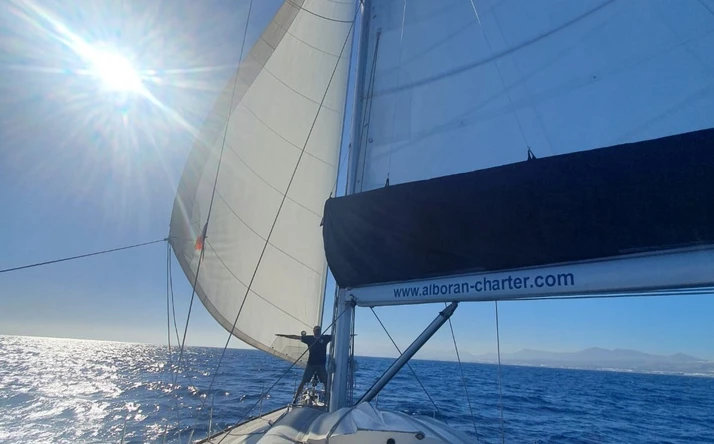
Now it was time for a little bit of dinner and to make sure of a good sleep before the next day’s adventures. We had plans to circumnavigate Tenerife from the northeast so as to take advantage of favourable winds on the long voyage to La Gomera. Northeasterly winds were expected for the next three days. We would avoid the wind shadow and the sails would do all the work for us. We had just taken charge of a Sun Odyssey 519 Jerez, equipped with a brand-new full-span mainsail.
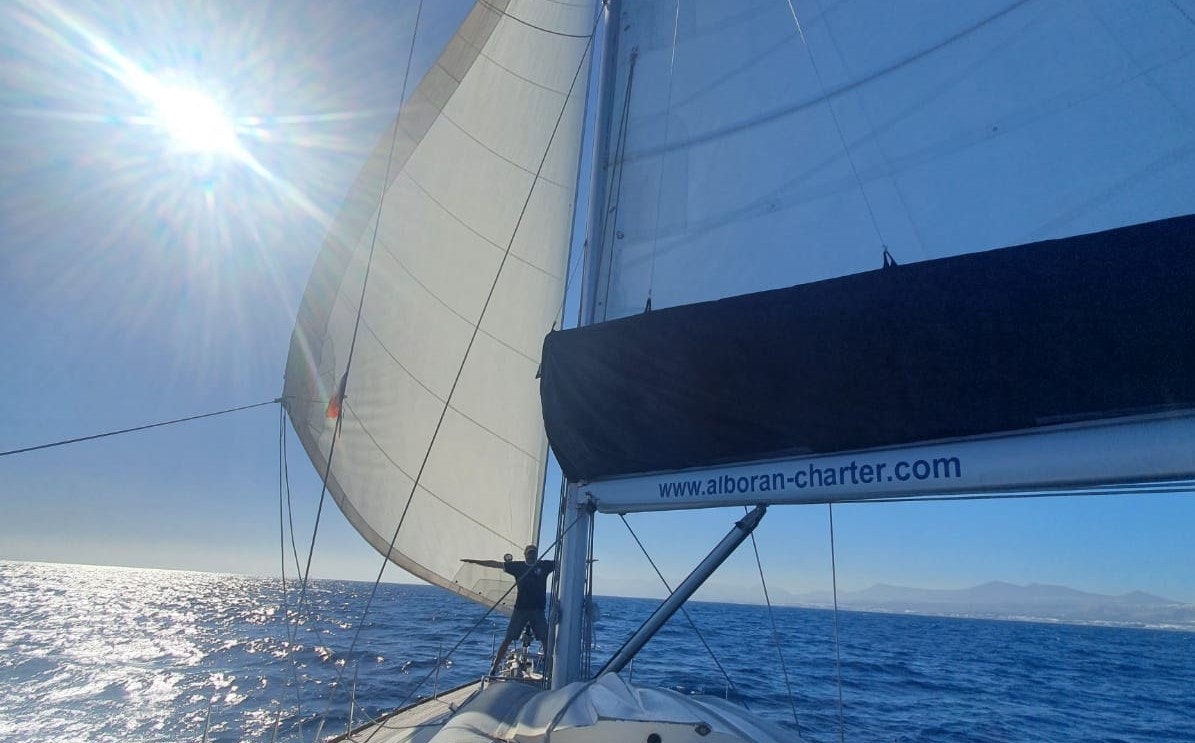
As morning arrived, we sailed out into the rippling sea. After circumnavigating the island of Roque de Dentro, however, we encountered a cross sea, which for some of the crew (including me) was not the most welcome of situations. We took turns at the helm, which more or less translated as taking turns suffering from bouts of nausea. Nonetheless the situation didn’t appear to be improving. We weren’t able to make any progress, so we had to consider alternatives. After about an hour, I reassessed the situation and turned the boat back. We circumnavigated Tenerife to the east and returned around the coast to arrive at calmer waters in the lee of the island as soon as possible. As we did so, we passed among a number of huge moored cruise ships.
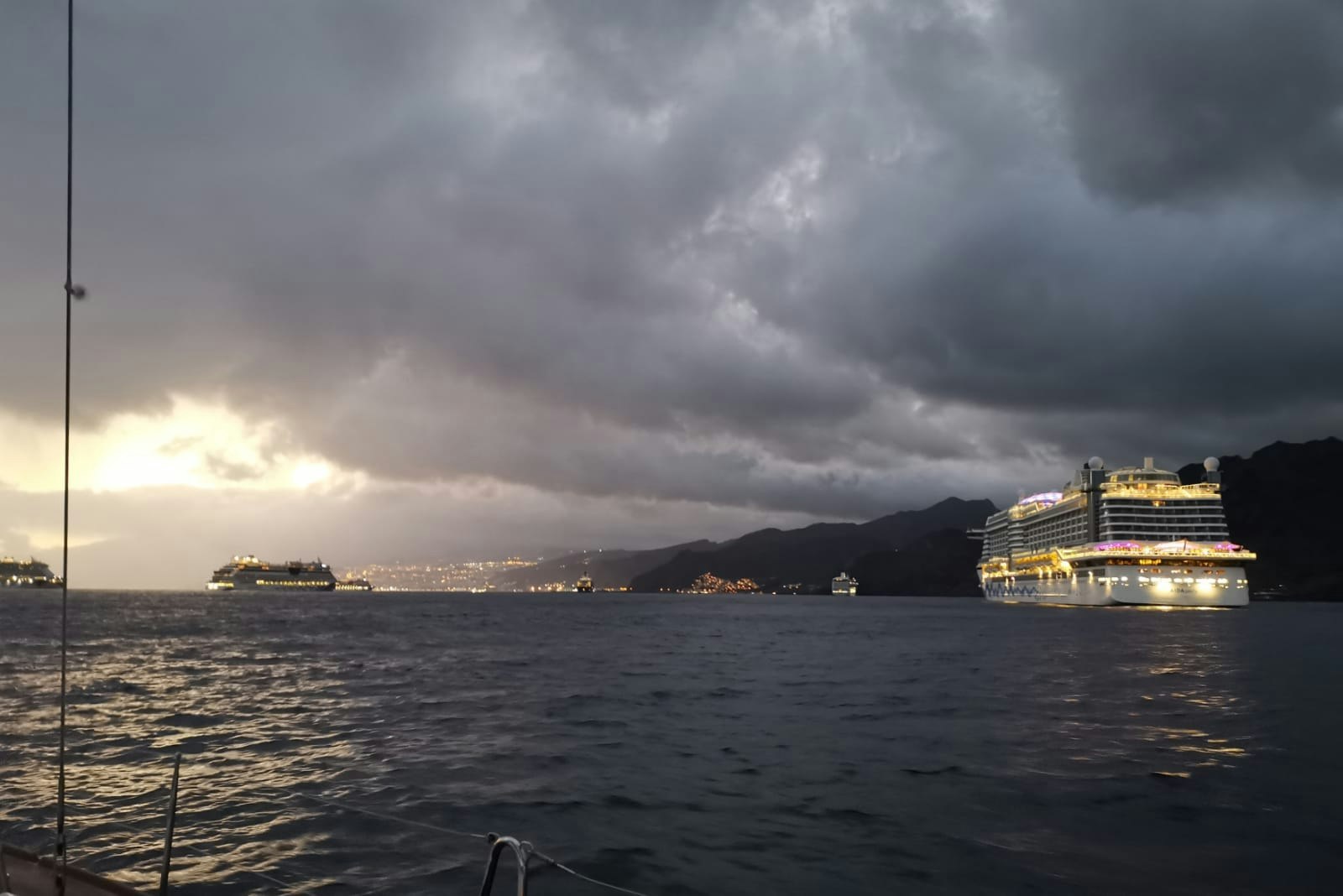
Once we’d recovered, we attempted to make our way down the centre of the channel between Gran Canaria and Tenerife, in order to minimize the effects of the wind shadow. At night, however, there was little in the way of wind and we sailed for about 5 hours using the engine. In the morning, the wind returned once more, so we set off for the island of La Gomera using the sails. We had 117 Nm ahead of us!

We’d never before had a problem renting a car on La Gomera. This year however, as a result of COVID, was a different story. It was noon before we were able to get behind the wheel of a Sandero, but once we did, we headed in different groups on our trips.

The first group made its way towards the peak of Alto de Garajonay, 1487 m above sea level, this despite some tough conditions. We all met in the car park there and, after a hearty sandwich lunch, we set off into the laurel forest. Some of us decided to then go on a hike to El Cedro, while the others visited Laguna Grande, after which I drove us back to the port.
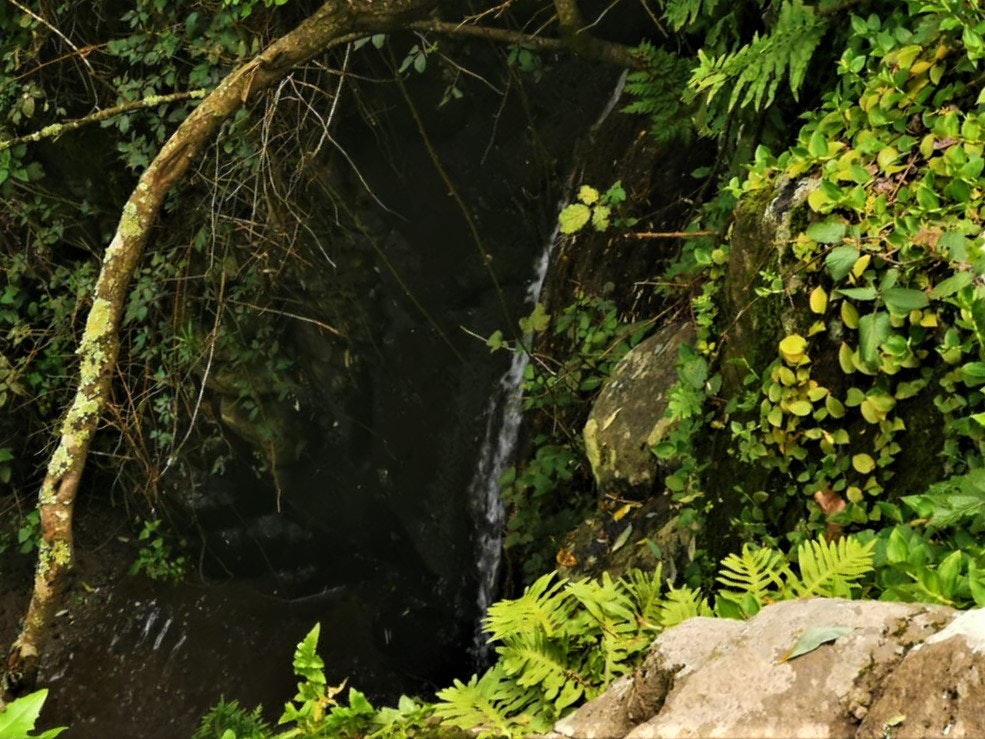
It has to be said that using Waze to navigate is not ideal; on the contrary, the use of off-line Mapy.cz served us much better. After dusk fell, we went for dinner at a restaurant, where we were all able to be seated at the same table.
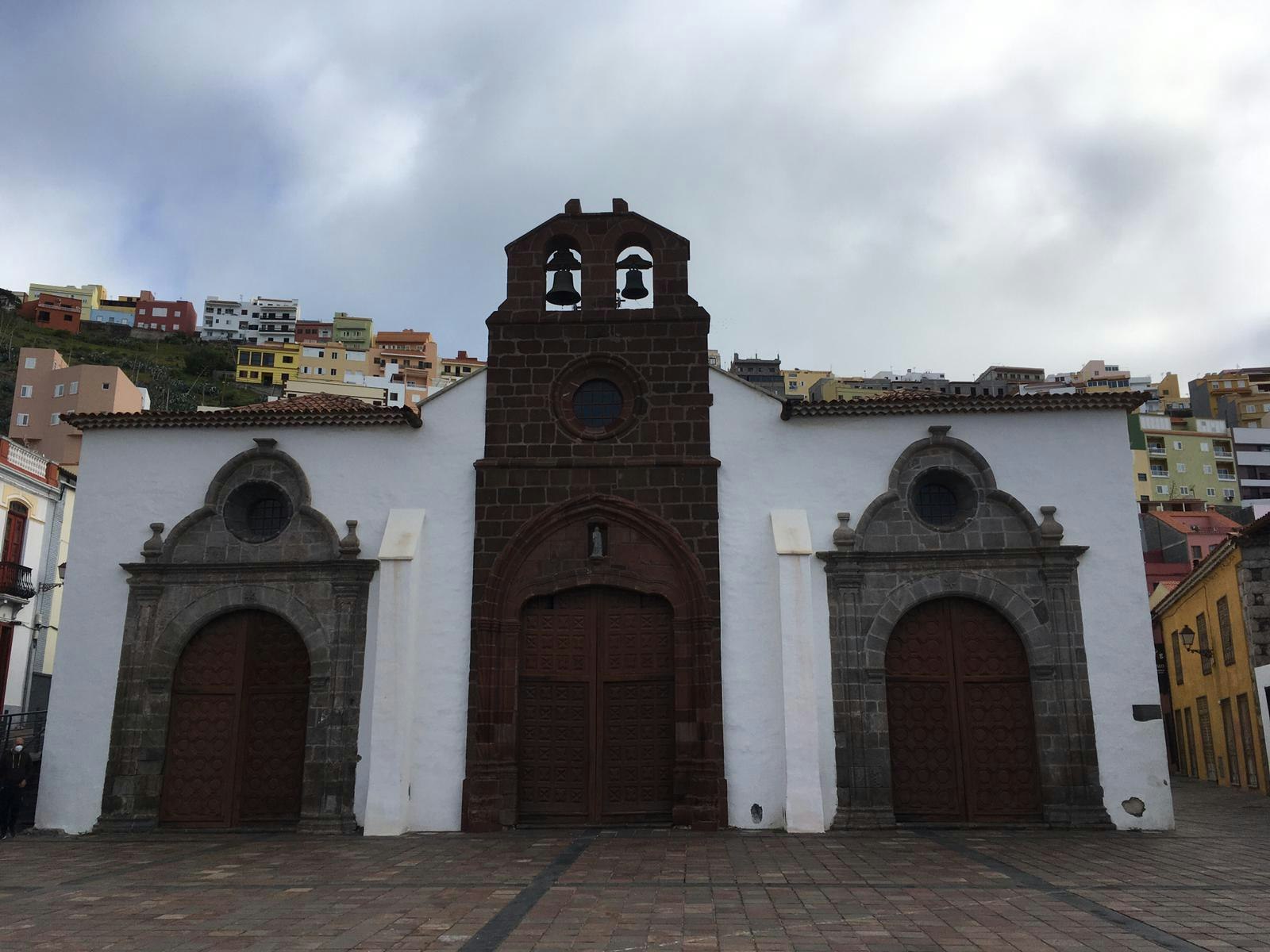
In the morning we handled the formalities at the port (the office has moved to the floor above the fuelling station) and before 10 o'clock we had set sail on the southern route towards El Hierro. We tested the gennaker against the broad reach (though unfortunately it was too small for our boat), so we sailed part of the way in the wind shadow using the engine.
We ended up getting a little behind the clock and it was dark by the time we arrived in La Restinga. We disembarked at the port wall and left the ropes loose enough. In the morning, a van was delivered to the port (the result of two months of negotiations) and we were able to set off on a day trip.

On El Hierro, cars can generally only be rented at the airport, which is quite some distance from La Restinga. As such, I’d always recommend making arrangements for renting a car in advance and requesting that it be dropped off at the port.
We visited the observation point above the town of Frontera, set at an altitude of 1360 m above sea level and with views of the islands of La Palma, La Gomera and Tenerife. Then we drove to the highest peak of El Hierro, Mount Pico de Malpaso, 1501 m above sea level.
The view is breathtaking and in good visibility, Mount Teide, 150 km away on the island of Tenerife, can be seen. After lunch, we drove down a dirt road towards the sea. On the way, we visited a church named the Ermita Virgen de Los Reyes, as well as the nearby Cueva del Caracol, an hermitage set in a cave.
We ended up by the sea at the Faro de Punta Orchila lighthouse, which lies on the site of the former “Spanish prime meridian”. There is still an volcanic tunnel nearby, though it is rather neglected from a touristic point of view. The tunnel is 160 metres long in places, quite high and about 5 m wide. Good flashlights are recommended if you are interested in a trip through the tunnel.
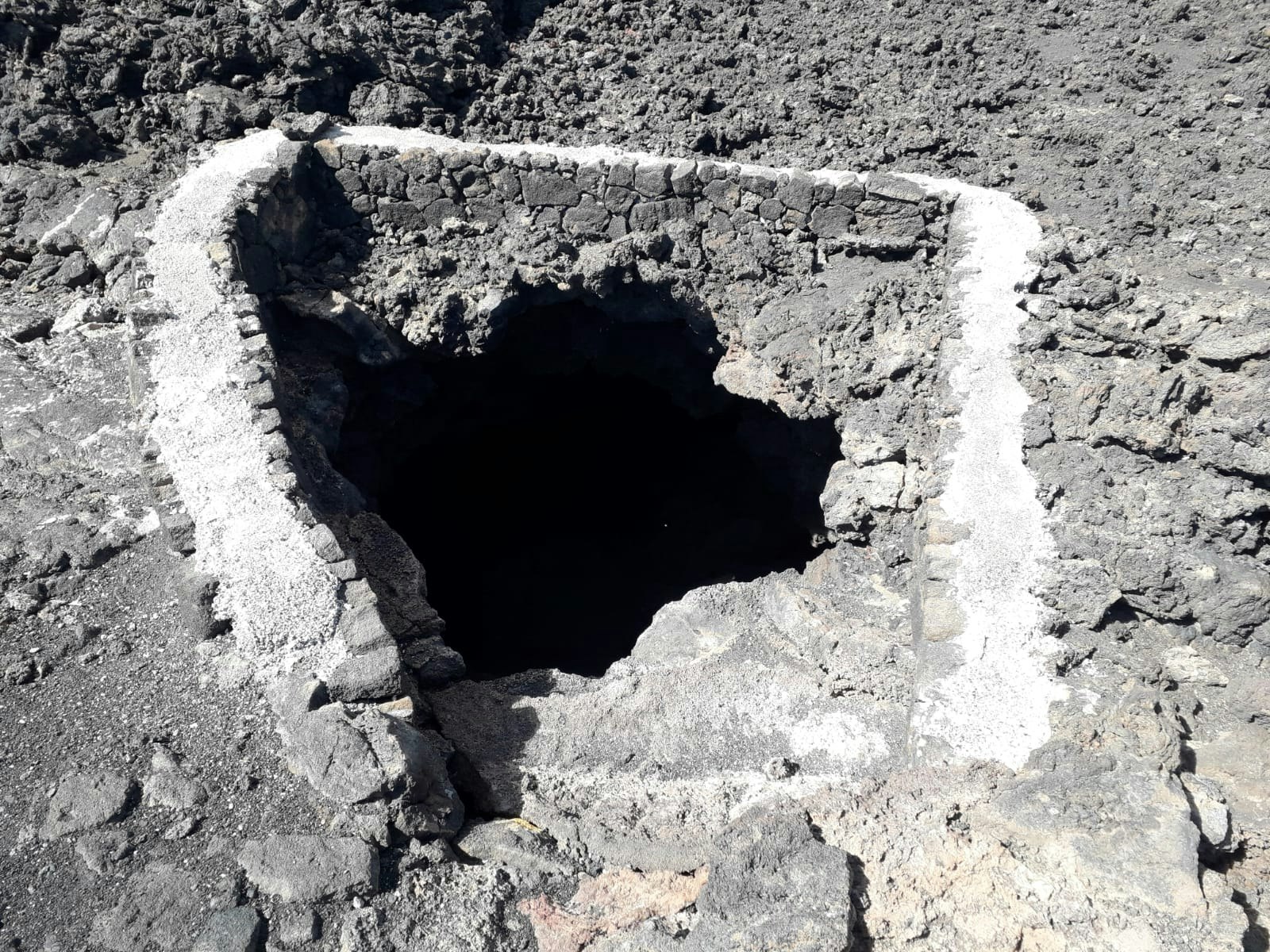
From here we drove across the whole island to the town of Valverde, which we had a look around. However, as a result of Covid, it's currently a ghost town. In the restaurant we sat four to a table. In the evening we made our way back to the marina, returned the car, had supper on the boat and set sail by night for La Palma. Unfortunately, we were to sail with almost no help from the winds, all the way to the port of Tazacorte. In the morning, before 9 o’clock had struck, we reported to the marina. Two cars were already waiting for us, so there was no time to waste before moving swiftly on. For the morning we had planned a trip to the bottom of the crater.
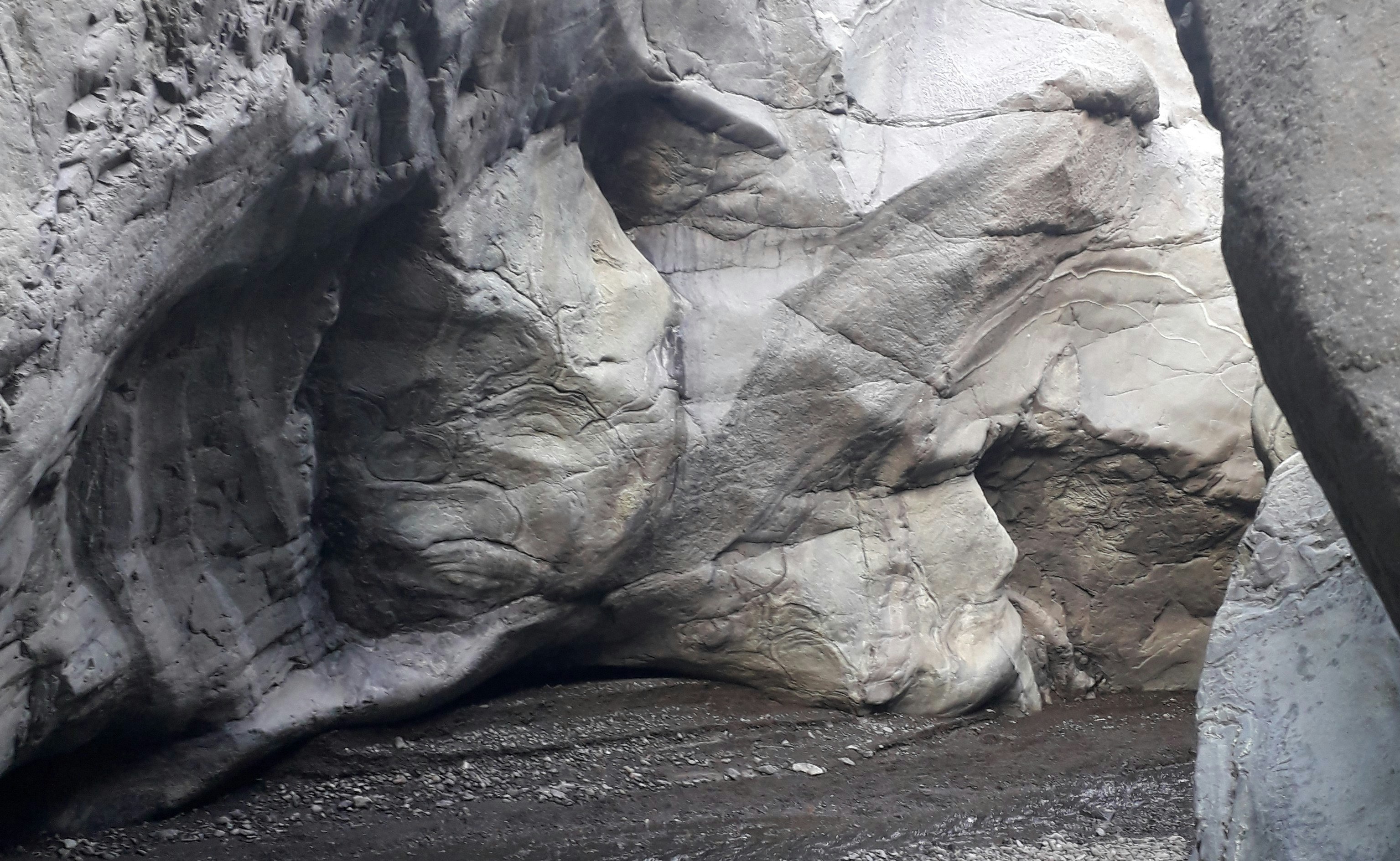
Last year we had walked from the port, which we found not to be the best idea. So now in our cars, we reached the edge of the crater and then continued on foot along a dry riverbed towards the bottom of the volcano. The water appeared and disappeared once and again, meandering this way and that, punctuating the breathtaking landscape.
We spent the afternoon in the port having lunch in a restaurant (again four at each table) and then cleaning ourselves up. In the late afternoon we set off again by car to the top of the crater, but due to road closures we didn’t manage to reach the top of Roque de Los Muchachos, 2426 m above sea level.
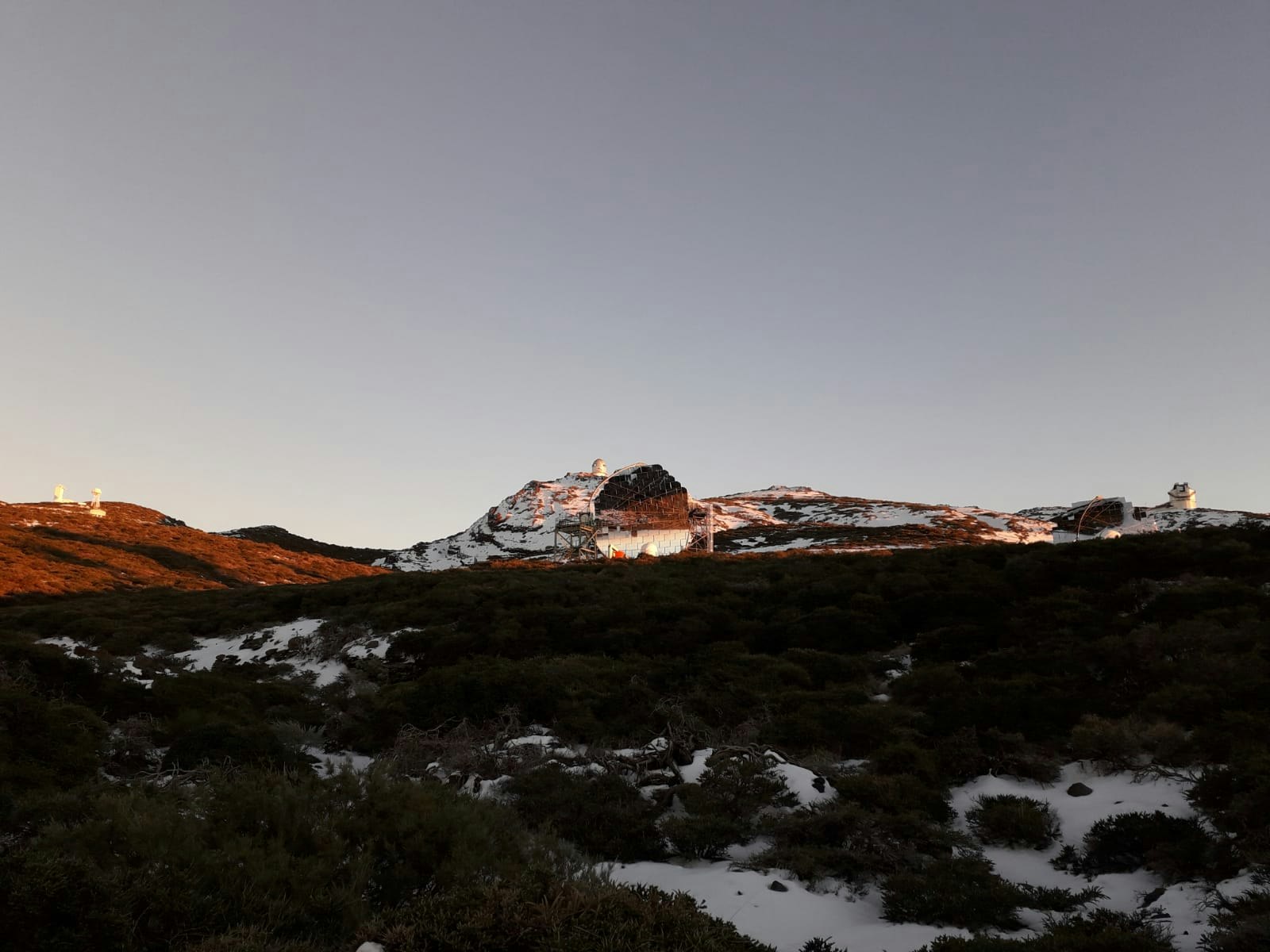
It was closed due to snow. Instead, at least, we were treated to a breathtaking sunset and remained there as darkness gradually descended. Once total darkness enveloped us, it was as if the stars were within reach and, unlike last year, not even the moon could dim them. We stood witness to the full array of the Orion constellation.
It’s impossible to know such a sight without spending time at sea to witness it. Such a view of a million stars is simply captivating - and found nowhere else.
The return by nightfall to the port was reminiscent of the famous 300-turn motorcycle race of Gustav Havel.

We set sail again in the morning, circumnavigating La Palma from the northwest and heading towards Selvagem Grande Island. Unfortunately, owing to Covid, we didn’t have permission to land on the island – a pity, but perhaps there will be another chance in the future.
We were lucky with the winds, and so not far from Selvagem Grande, we turned slightly to the east and headed 27 into the strait between Lanzarote and La Graciosa. As expected, they did not have a place for us in the port of Caleta del Sebo (we had been notified of the need to book at least four days in advance), so according to our plan, and after travelling 280 Nm, we anchored in front of the port.
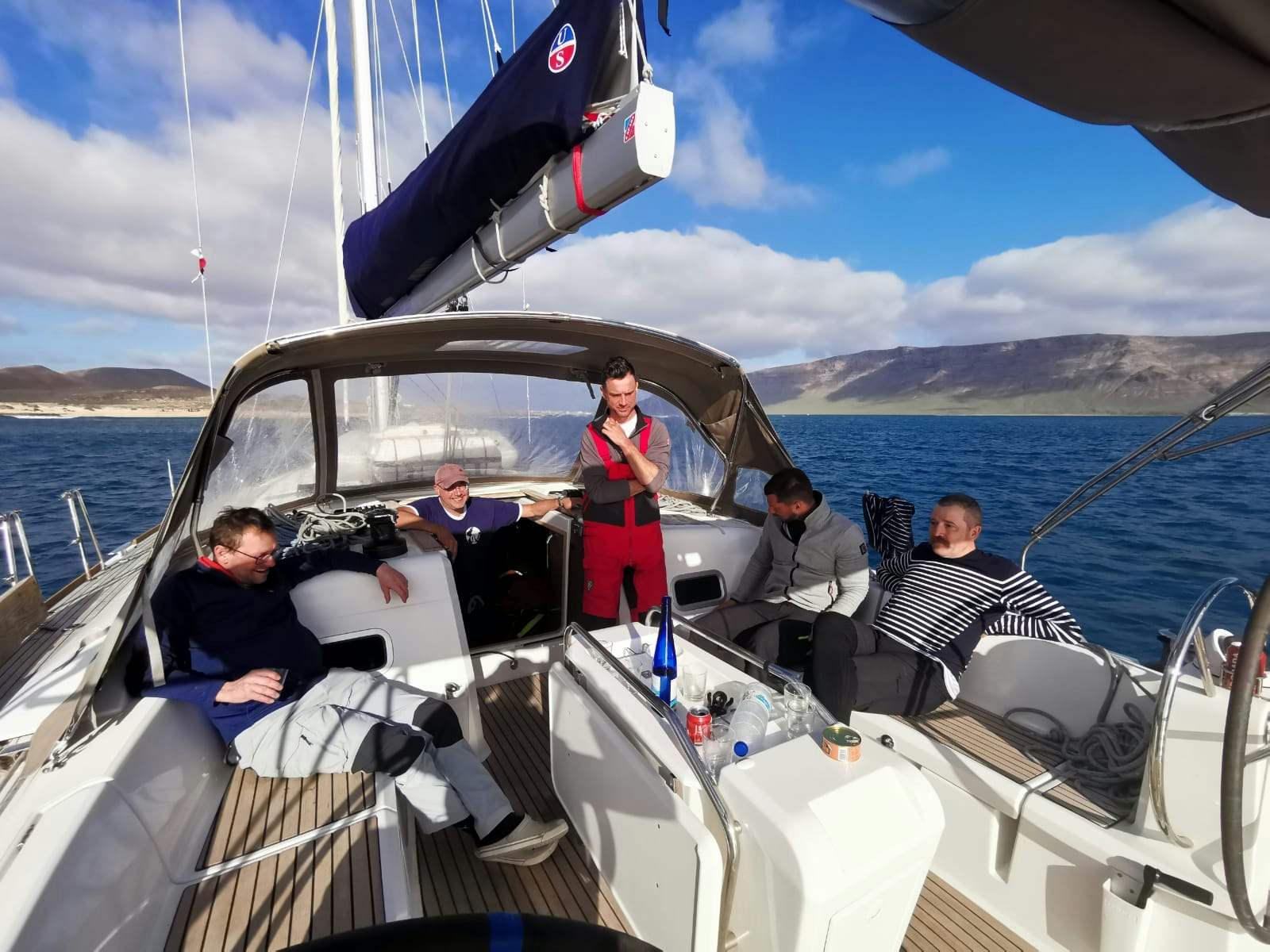
Finally, I swam in the sea hunting for the mythical tuna from Rio Mare.
The next morning before setting sail we tried to solve a problem we’d noticed relating to the anchor. The previous evening, I had tightened the rudder locking mechanism, and it still seemed locked even after being unlocked. There were creaking noises in the steering column and the steering wheel was stiff to the turn. During the voyage we kept checking the whole rudder mechanism but, alas, could not find the real cause.
In the end, we attempted to lubricate the steering wheel pedestal with oil. It helped a bit, only for the squeaking to return after a few miles. We established that, despite the annoyance caused by the defect, it was not dangerous to sail, so we still headed towards the Marina Rubicón in the south of Lanzarote.
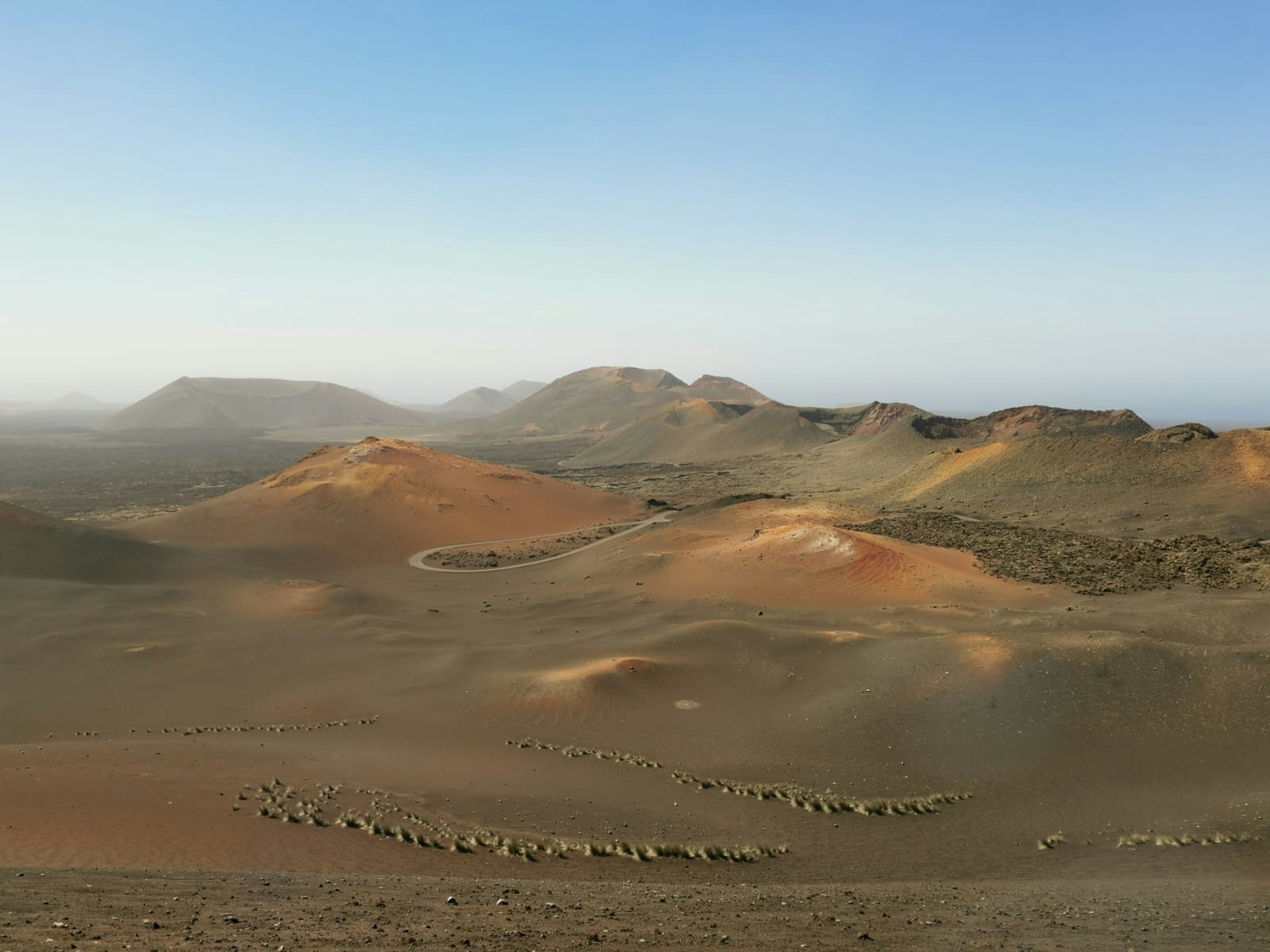
What’s strange is that the locking wheel of the steering wheel had come loose from its pin (the approx. 10 cm long rod is usually connected to the wheel). This turned out to be the cause of the fault. We had to pull the pin out of the steering wheel axle using pliers to apply the force needed. Hallelujah, finally the problem was solved! We set sail towards the Marina Rubicón after sunset and arrived as expected at the port. In the morning we rented a car and set off together from the southwest for a trip. We drove first to the salt pan and its deposits of sea salt.
Next we visited the Los Hervideros sea caves; unfortunately the waves were not the strongest that day, but even so, the experience was definitely worth it. The next stop was Laguna Verde.
We were also on our way to the island’s biggest tourist attraction, the volcanic national park. However, a good lunch can be difficult to find at this time, due to restrictions. As currently there can only be two at a table in Lanzarote, eating at a restaurant was out of the question.

In the end, we did get something to eat in San Bartolomé, but at the cost of some valuable time. We had no idea that owing to Covid, everything shuts at 5 pm. So we didn’t make it to the Jardin de Cactus and we also had to forgo the Jameos del Agua volcanic tunnel, as well as the Cueva de los Verdes cave.
Unfortunately, we also didn’t manage to pop in on our friends at the well-known La Geria winery, which we had visited the previous year. Fortunately, however, their wines can be found on sale at the local supermarket, so the evening festivities would make up for it. We had dinner on the boat and celebrated. This was the day that I had finally reached a personal milestone of 20,000 nautical miles sailed.
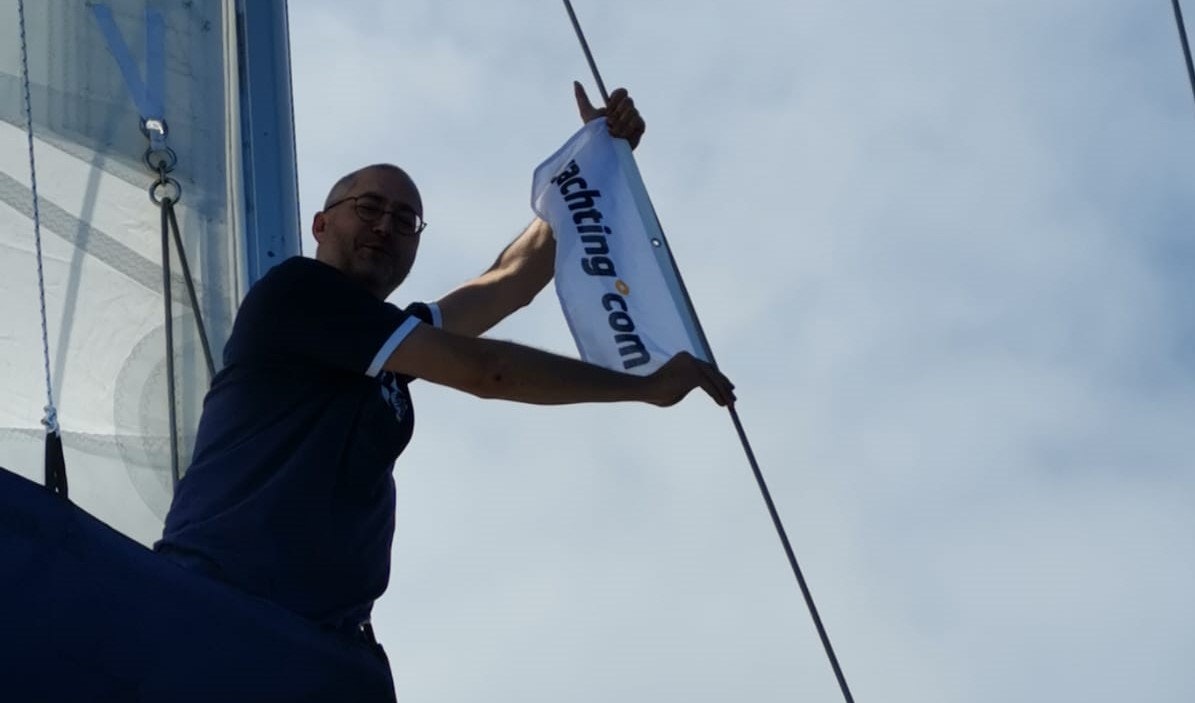
In the morning, no one was all too enthusiastic about emerging from their warm cosy spots. Nonetheless, we returned the car, dealt with the port formalities and then learned of several pieces of bad news: Fuerteventura was not going to be able to welcome us; we would not be able to land in the port of Morro Jable; nor was it possible to rent a car there. So, alas, we would have to wait for next time.
We set out with a plan to drop anchor in front of Morro Jable. The wind had weakened quite noticeably, both at sea and nearer the coast. We arrived at our berth in darkness, like pirates. There was a wind of about 20 knots throughout the night and until the morning. As a result, the waves swayed the boat gently, rocking us through the night. However, the Rocna anchor kept us secure, its stainless steel chain retracted at 2800 rpm. So the night passed without event. In the morning the wind relented somewhat and changed direction. We prepared ourselves for a long voyage back to Gran Canaria with the wind at our back. When sailing with the wind at our back, we use an auxiliary sail just as you would find with a gennaker.
After 73 Nm we sailed into Las Palmas. We had only time to sleep here and in the morning set off into the waves once again. In rising winds, we sailed by the beautiful Radazul, a pearl on the coast of Tenerife. There was not a soul at the marina, so we disembarked at the fuelling station and went for dinner at a restaurant. The seating restrictions had changed within the previous 14 days, so that day we were able to sit at a table for six. After 13 days of sailing, we had covered 773 Nm (Navionics showed that our two other sailors had covered up to 820 Nm).
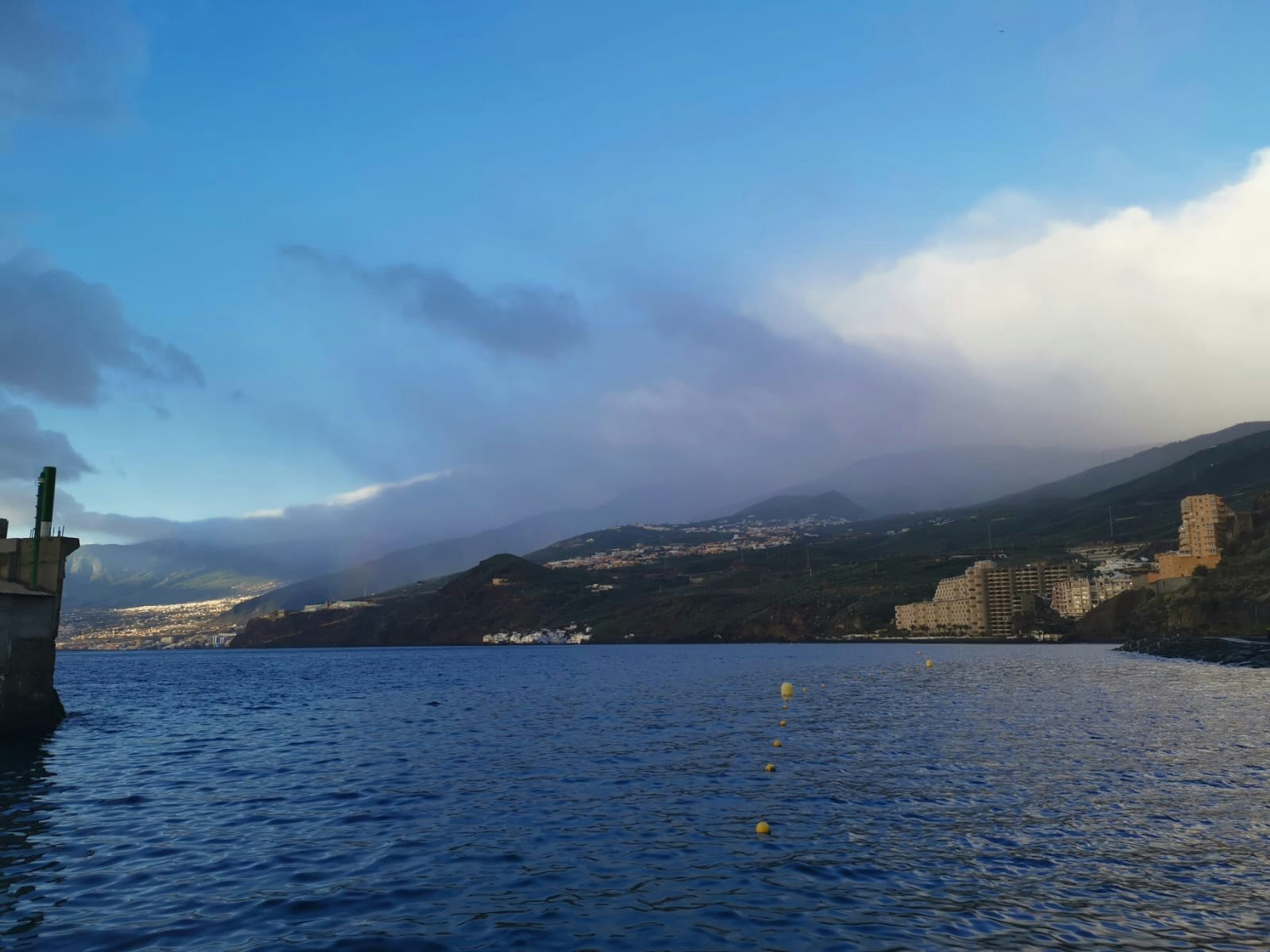
So in the morning, and with the help of Alboran, we had only to stop off at a test laboratory on the way to the airport, hand over the boat (without any damage) and head back to less sunny climes.
After a number of cruises in this area, I can only recommend a two-week trip. With a little determination and a few overnight trips, you can traverse the entire archipelago. If you spend some time planning the cruise and arranging vehicles ahead of time with car rental agencies, the cruise can double as a sightseeing trip. You’ll be sure to want to return often to this paradise.
author: Ladislav Kalina, Yachting instructor
photography credits: Jan Hesoun